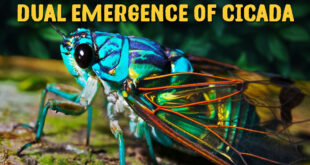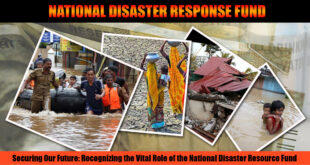Change could not have happened without an exercise some biologists call “extreme conservation”, which has entailed monitoring every single ape in the rainforest Deep in the rainforest of Volcanoes National Park, a 23-year-old female gorilla named Kurudi feeds on a strand of wild celery. She bends the green stalks and, with long careful fingers, peels off the exterior skin to expose the succulent inside. Biologist Jean Paul Hirwa notes her meal on his tablet computer as he peers out from behind a nearby stand of stinging nettles. The large adult male sitting next to her, known as a silverback, looks at him quizzically. Mr. Hirwa makes a low hum “ahh-mmm” imitating the gorillas’ usual sound of reassurance. “I’m here,” Mr. Hirwa is trying to say. “It’s OK. No reason to worry.” Raising the alarm American primatologist Diane Fossey, who died in 1985, would likely be surprised any mountain gorillas are left to study. Alarmed by rising rates of poaching and deforestation in central Africa, she predicted the species could go extinct by 2000. A concerted and sustained conservation campaign has averted the worst and given a second chance to these great apes, which share about 98% of human DNA. Last year, the Switzerland-based International Union for Conservation of Nature changed the status of mountain gorillas from “critically endangered” to “endangered,” an improved if still-fragile designation, reflecting new survey data. It wouldn’t have happened without an intervention some biologists call “extreme conservation,” which has entailed monitoring every single gorilla in the rainforest, periodically giving them veterinary care to clean infected wounds, for instance, and funding forest protection by sending money into communities that might otherwise resent not being able to convert the woods into cropland. “The gorillas are still here. We celebrate that as a victory,” Mr. Hirwa says. Instead of disappearing, the number of mountain gorillas, a subspecies of the eastern gorilla, has risen from 680 a decade ago to just over 1,000 today. Their population is split between two regions, including mist-covered defunct volcanoes within Congo, Uganda and Rwanda one of Africa’s smallest and most densely populated countries. “The population of mountain gorillas is still vulnerable,” says George Schaller, a renowned biologist and gorilla expert. “But their numbers are now growing, and that’s remarkable.” Once depicted in legends and films like King Kong as fearsome beasts, gorillas are actually languid primates that eat only plants and insects, and live in fairly stable, extended family groups. Their strength and chest-thumping displays are generally reserved for contests between male rivals. Medical assistance Every week, Mr. Hirwa and other scientists gather data as part of long-term behavioural research. In case medical intervention is needed, the scientists inform the chief park warden and the staff at Gorillas Doctors, a non-governmental group whose veterinarians work in the forest. The vets monitor wounds and signs of respiratory infections, but they intervene only sparingly. When they do for example, by darting a gorilla with antibiotics they almost never remove the animals from the mountain, since reuniting gorillas can be difficult. A long absence can change the delicate social dynamic. “Our hospital is the forest,” says Jean Bosco Noheli, a veterinarian at Gorilla Doctors. When his team goes into the field to address a gorilla emergency, they must carry everything they might need in equipment bags weighing up to 45 kg, including portable X-ray machines. Mr. Schaller, the biologist, conducted the first detailed studies of mountain gorillas in the 1950s and early 60s, in what was then the Belgian Congo. He was the first to discover that wild gorillas could, over time, become comfortable with periodic human presence, a boon to researchers and, later, tourists. Today, highly regulated tour groups hike in the Rwandan rainforest to watch gorillas. Within Volcanoes National Park, tour groups are limited to eight people at a time, with only an hour spent observing gorillas. People are not allowed to carry food or even water bottles near the animals, lest a curious silverback snatch them and get exposed to germs from humans. The number of tourists per day is limited, and the price is steep: $1,500 (Rs. 1.6 lakh) per visit. Sustainable ideas Ticket revenue pays for operating costs and outstrips what might have been made from converting the rainforest to potato farms and cattle pastures. About 40% of the forest already was cleared for agriculture in the early 1970s. “With tourism, the tension is always not to overexploit,” says Dirck Byler, great ape conservation director at the non-profit Global Wildlife Conservation, which is not involved in the Rwanda gorilla project. “But in Rwanda, so far they’re careful, and it’s working.” The idea of using tourism to help fund conservation was contentious when conservationists Bill Weber and Amy Vedder first proposed it while living in Rwanda during the 1970s and 80s. Diane Fossey herself was sceptical, but the pair persisted. Figuring out the balance of how many people could visit the forest, and for how long, was a delicate process of trial and error, Mr. Weber says. The pair, who are married and currently professors at Yale University, had another idea, equally radical when it was first proposed some of the money raised must benefit local communities. “Back then, the field of conservation was dominated by the ‘fortress model’: You draw a line, build a wall, hire guards and keep local people out,” Mr. Weber says. “But it wasn’t really working to stop poaching. There needs to be a real incentive for local people to care about conservation.” In 2005, the government adopted a model to steer 5% of tourism revenue from Volcanoes National Park to build infrastructure in surrounding villages, including schools and health clinics. Two years ago, the share was raised to 10%. To date, about $2 million has gone into funding village projects, chief park warden Prosper Uwingeli says. “Every year, we meet with the communities,” he says. “We have to give back.”
Check Also
Securing Our Future: Recognizing the Vital Role of the National Disaster Resource Fund
TABLE OF CONTENTS News Concept of NDRF Key Features of NDRF News: Tamil Nadu …
 Chinmaya IAS Academy – Current Affairs Chinmaya IAS Academy – Current Affairs
Chinmaya IAS Academy – Current Affairs Chinmaya IAS Academy – Current Affairs



